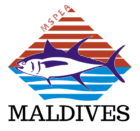
Malé – July 2021
The Maldives is believed to have one of the best managed array of anchored fish aggregating devices (aFADs) in the world. Started in 1981 as a small pilot project to demonstrate aFADs can augment tuna catch and reduce fuel costs, the program became popular and grew, in 1992, as part of the regular budgeted program of the Ministry. Unlike in most other coastal tuna fisheries, FADs are deployed and managed exclusively by the government in the Maldives. “This is to ensure that FADs are well-managed in the Maldives and that the Ministry can be responsible to the Indian Ocean Tuna Commission (IOTC) which Maldives is a party to” said Adam Ziyad, Director General of the Ministry of Fisheries, Marine Resources & Agriculture, in response to a question from a recreational fisherman on private installation of FADs.
“Currently the FAD array has 56 FADs located 25-30 km from outside the atoll, anchored in more than 2km deep ocean”, says Dr. Hussain Rasheed Hassan. Some 15-20 get lost in any given year and once a FAD is reported lost, the Ministry deploys a new or a refurbished FAD in the same location.
The mooring and, and the FAD buoys have to be fabricated to withstand harsh environmental conditions, to ensure the aFAD is in good condition for longest time possible. Unlike the drifting FADs deployed by purse seiners, Maldivian anchored FADs have streamers attached to mooring line at surface as the “attractive” feature of the FAD. Any form of betting is not permitted as it contributes biofouling, loss and may contribute ghost fishing.
Umar Jamaal, President of the MSPEA said FADs are hot-button issues and is lined how fisheries’ sustainability is perceived. It is critical that that our FADs are seen different from those of drifting FADs used by the purse seiners. He talked of changing the narrative of anchored FADs which is very different from the drifting FADs which have been implicated in catching large number of juveniles impeding the rebuilding plan of Indian Ocean yellowfin tuna.
The discussion held simultaneously via Zoom and the popular Club House, are only for eliciting public and stakeholder’s perspective on i) increasing number of aFADs to be installed, ii) having specific sets of aFADs for the recreational and sports fishermen and iii) having Bait FADs (bFAD) in installed in atoll-lagoons.
